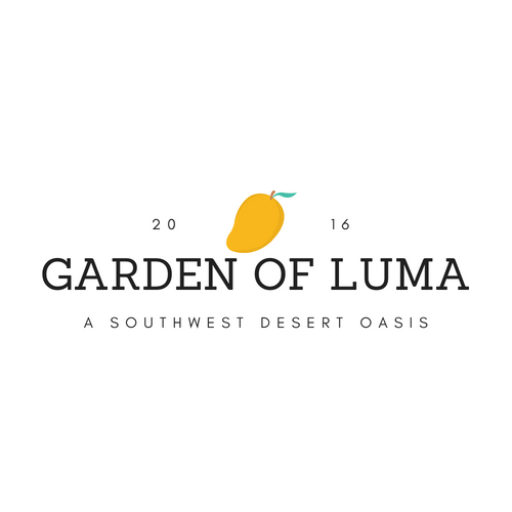Smart Strategies to Maximize Your Garden Space

As someone living in a major city, owning a property with acres of land is tough to come by. Often times in urban environments we have to be creative in order to maximize our garden space. It’s common for people in urban settings to live in condos or apartments which limit space even more. With all that being said, it’s still possible to garden with limited space.
How do I Maximize my Garden Space?
One of the best things about gardening is that you can pretty much grow something anywhere. There are some great options for gardening in tight spaces. These are a few options that I utilize and recommend.
Build Up
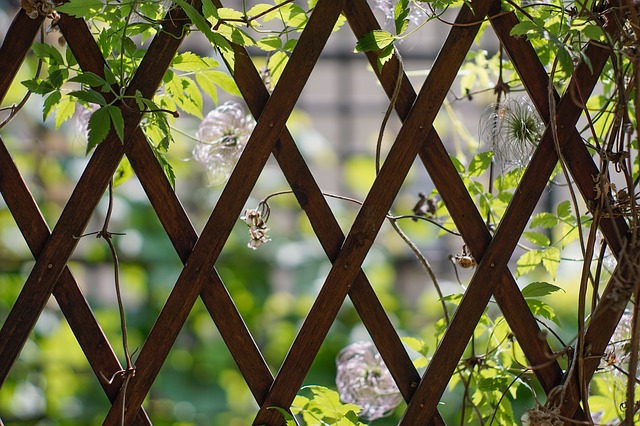
Going vertical can often save a lot of space. There are some amazing tower planters or vertical gardens which allow for several compartments for planting options. Hanging planters can be great to dangle from eaves or patios. Utilizing lattices or a trellis is a great option for growing vining plants like melons, cucumbers, peas, or squash. These can easily be placed next to a wall.
Grow Indoors
With SMART features indoor gardening has become more of a trend. For reasonable costs, mini gardens can be grown in the convenience of your kitchen space to have ongoing year round harvests. These gardens can save space as well as alleviate many of the problems that come with pests or adverse weather conditions. Here is one great option worth checking out: AeroGarden Farm Plus Hydroponic Garden

Not only can SMART options be found, but just utilizing window sills for herb gardens can be a great way to maximize indoor space.

Indoor Herb Garden Starter Kit – Certified 100% USDA Organic Non GMO

What is Intensive Planting?
Intensive planting is utilizing techniques that save time and space through detailed organization. Most farming or gardening techniques consist of planting crops in rows, but this doesn’t always maximize the most amount of space. Intensive planting utilizes methods like square foot planting where you plant as much as possible in a box space versus rows. Here are some key components for intensive planting:
- Companion Planting– Growing plants that thrive together and grow in unison is key. When companion planting you can add herbs, flowers, and vegetables that work in harmony with repelling bugs to support healthy growth. Check out my post, Raised Bed Gardening for Hot Climates, which provides a complete guide on what plants work well together.
- Succession Planting– Planting crops back to back optimizes crops and the growing seasons. In the desert climate I live in, tomatoes are planted in late winter/early spring, but beets are planted in fall, so I could immediately follow my tomato crop with planting beets or cool weather crops.
- Raised Beds-The only gardening I recommend for hot, dry climates is raised bed gardening. It’s so much easier to control the soil and keep the soil healthy. Providing an ongoing supply of compost and organic material will keep your soil life active for health root systems. Raised beds can be as small or large as you want them to be. Here is how I prep my raised beds: Getting your Raised Bed Garden Ready for Planting Season.
How do I Maximize my Space for Fruit Trees?
Growing fruit trees is a major component of my backyard food forest. Fruit trees can take up a lot of space if you allow them too, so I’m all about finding ways to grow as many varieties of fruit as possible. Here are some of the methods I’ve discovered and utilized in my backyard.
Espalier
An espaliered fruit tree is one that has pruned and stretched to take on a 2-D form. The main scaffolding branches are all running on a horizontal plane. This makes espaliered trees perfect for planting up against a wall or structure without taking up much space. Espaliered trees carry a sense of beauty that many people enjoy. Back in the middle ages, espaliered trees were done to create walls for courtyards.
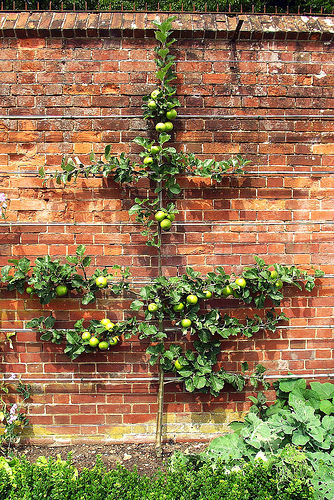
Typically, a tree is purchased already espaliered, but can be done with extensive pruning and training when trees are young. Apple trees are the best to espalier, but pears or figs can be good options. If you want to train some trees yourself, use some 12 gauge wire and run it between two posts. Tie the scaffolding branches along the wire, similar to trellising grapes, and prune all other branches.
Utilize Containers
I’m a big advocate of container growing and have several fruit trees solely in containers. It can be a bit more work, but it definitely helps save some space. If growing in containers you have to be more diligent with feeding, watering, and pruning. I enjoy container growing as it allows me to grow more in a limited space and be able to try varieties that are marginal to my climate. Here is my complete guide for growing fruit trees in containers.
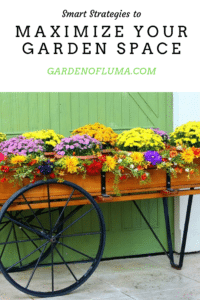
High Density Planting
Many resources recommend planting 15 feet or more in between trees. This is great if you have an orchard or large plot of land. For the average homeowner that wants a couple different kinds of fruit trees, space is at a premium. High density planting methods encourage things like planting 2-3 trees in one hole or planting several trees close together. Here are some diagrams from Dave Wilson Nursery. With consistent vigorous pruning methods, fruit trees can be maintained at a small size.
I tend to utilize this method with my fruit trees and have trees around 5-6 feet from each other. I’d rather have smaller trees for ease of access to the fruit. Also, if you have large trees, you tend to have a lot of excess fruit that can go to waste, so keeping them small helps to have the right amount of fruit to feed your family.
Grafting
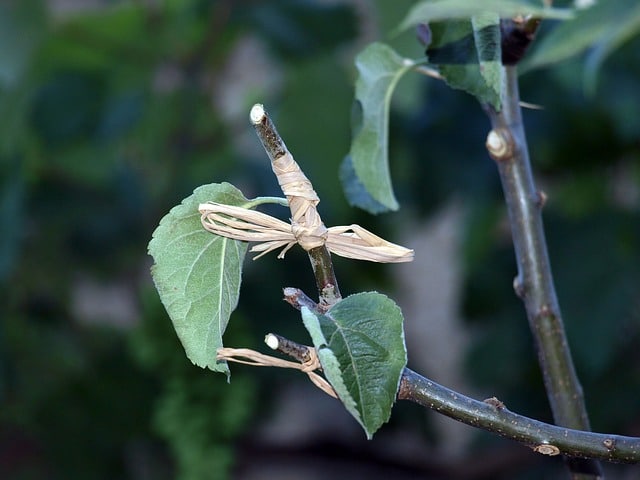
Many Fruit Trees can get extremely large. If you’re tight on space, but want a variety of fruit, grafting can be a great way to go. Grafting is a relatively easy skill to learn and can allow you to create a fruit tree that has multiple varieties on it. This way you can have one large tree, but more than one kind of fruit. For instance, if you have a peach tree, most of the stone fruits or fruits with a pit, like nectarines, plum, apricots, plumcots, necta-plums, apriums, and pluots can all be grafted to one tree.
On a final note, if you’re living with minimal space, but want to garden, all hope is not lost. There are so many strategies to utilize to get the most out of every inch of outdoor space you have. Utilizing these strategies will help you to get the most out of gardening in an urban setting while harvesting as much produce as possible.
Please comment below on anything that you’ve enjoyed from this post or your strategies for maximizing garden space.
photo credit: Snapshooter46 Apples in a walled garden via photopin (license)
